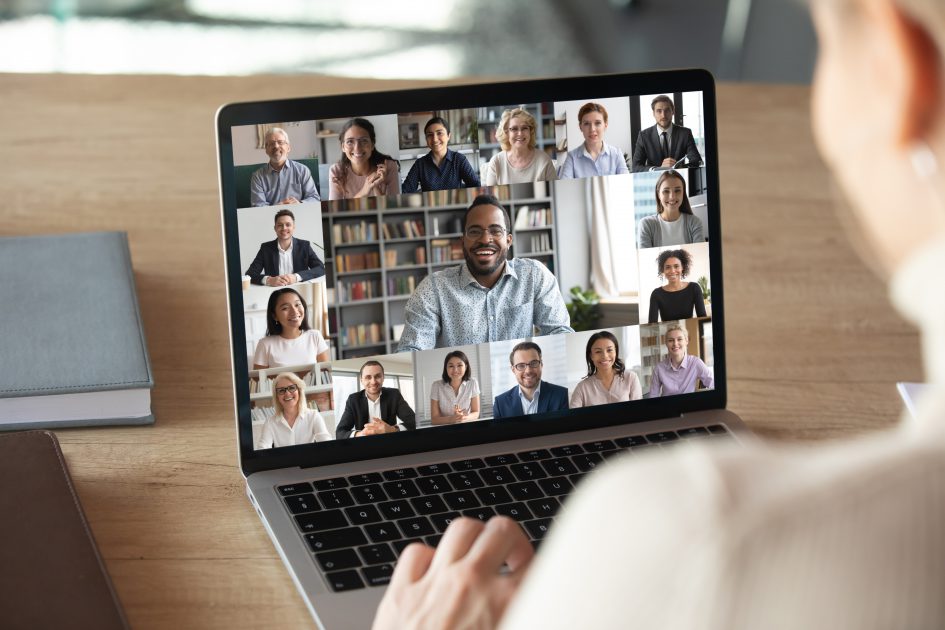There’s something about meeting in person that feels so special after years stuck inside, but online events have their own appeal that’s here to stay. Online events save you the trouble of finding a venue and save everyone’s time commuting to the event. Virtual events also have the ability to expand your group to a wider audience for more connections and conversations. Even if your group typically only meets in person, you might find value in adding online events to your calendar. Check out these tips for setting up and hosting a fantastic (and safe!) online event:
1. Set the tone at the beginning
Start the virtual event off right and welcome people as they join, just as you would in person. This step is especially important online, where social cues like body language are harder to read.
Introduce yourself, share a quick overview for what the event will be like, and set any basic ground rules for the event, such as reminding attendees to mute themselves when they’re not speaking. Both new and returning members should feel comfortable and ready to dive into the event after a warm welcome.
2. Encourage participation
Share the stage and encourage members to join in! Participation possibilities vary depending on how large the event is. For events with hundreds of people, ask attendees to share where they’re calling in from in the chat to keep them engaged and feel like they’re a part of the conversation. Check out these tools to boost engagement in online events.
For smaller groups, encourage attendees to keep their cameras on if they’re comfortable and start the event with an optional icebreaker question to get the conversation rolling, though allow people who aren’t comfortable speaking to a group to listen. Try and identify first-time attendees who may be more reserved, and give them the opportunity to introduce themselves to the group.
3. Have an agenda with time limits and stick to them
It’s a good idea to set a structure for events so that members can have an idea of what to expect. Having a structure can be as simple as sharing the length of your event, or as detailed as having a breakdown of each segment of the event. Communicating your agenda helps align expectations and shows consideration for others’ time. Research indicates that virtual events feel more draining than in-person events so it’s good to keep things short and sweet. Need inspiration for an online event? Check out these examples and their agendas.
4. Break up the event with a variety of content and activities
Keep the event engaging by switching things up and segmenting the event. Avoid long speeches from a single person. Instead, include opportunities for attendees to ask questions and engage with the group. Incorporate images, videos, and polls to bring more energy to a presentation-style event. If there are many attendees, try breakout rooms to make smaller group conversations possible, especially for more reserved participants. Re-group at the end and debrief, allowing members to share anything interesting from the breakout session.
5. Secure your event
To avoid uninvited guests or disruptions, follow our security guidelines for online events. Require a passcode for the event and restrict participant screen sharing. You can also edit security options while in a meeting. If you’ve never hosted a virtual event before, create a test event by yourself or with a friend to make sure you’re ready to go. Learn from an expert how to use Zoom in this event recording.
6. Embrace technology
There’s a feature that’s sure to make online event organizing even easier: Meetup’s integration with Zoom! Oganizers can add a Zoom link to an online event with the click of a button. Similar to integrations on Google Calendar, this seamless way to add a link makes setting up online events a breeze.
Be sure to test your tech in advance—check your internet connection and settings before the event. Bring some fun by encouraging your participants to select a fun virtual background image on Zoom, or try different virtual event platforms to keep things fresh and engaging. Don’t be afraid to try things out, find what works best for your group, and ask for feedback along the way.

Need help setting up an online event? Check out this guide.
Online events are an important tool in any community builder’s toolkit, and they offer an easy way to stay connected with your group and make real connections with members across the globe or just across town. Jump into great conversations with friends without leaving home and stay connected with the community you’ve built on Meetup!
Join Meetup Live for live sessions with expert organizers and more, and check out the event recordings. Listen to Meetup’s podcast, Keep Connected, to learn more about the power of community and how it’s impacted Meetup organizers across the globe. Stay up-to-date with Community Matters and check out other articles like this one in our Organizer Guide. Lastly, follow us on Facebook, Twitter, Instagram, TikTok, and LinkedIn for inspiration, reminders, and tips for finding and building community.
Last modified on August 30, 2023











